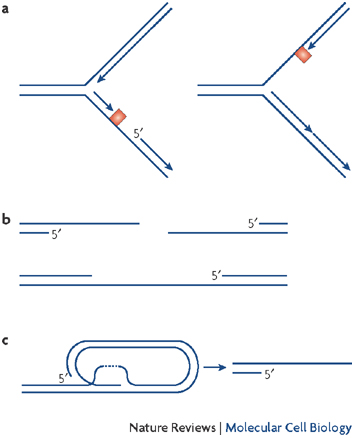Single-stranded DNA (ssDNA) at the stalled replication fork
Keywords
Flag Inappropriate
Delete Content

Single-stranded DNA (ssDNA) at the stalled replication fork
(A) RFs slow and then stall during HU treatment, generating ssDNA. (B) This ssDNA is a signal that resembles DNA damage from resected DNA DSBs or single-strand repair patches. (C) ssDNA is also generated at telomeres and is a signal of telomere instability. A common feature in all of these structures is the presence of ssDNA, which causes ATR activation to promote RF stalling, DNA repair, and cell cycle stalling. Thus, ssDNA is a potent signal that links DNA damage to repair.
This image is linked to the following Scitable pages:
At a stalled DNA replication fork, how is replication restarted after DNA damage has been resolved?





















Comments
CloseComments
Please Post Your Comment